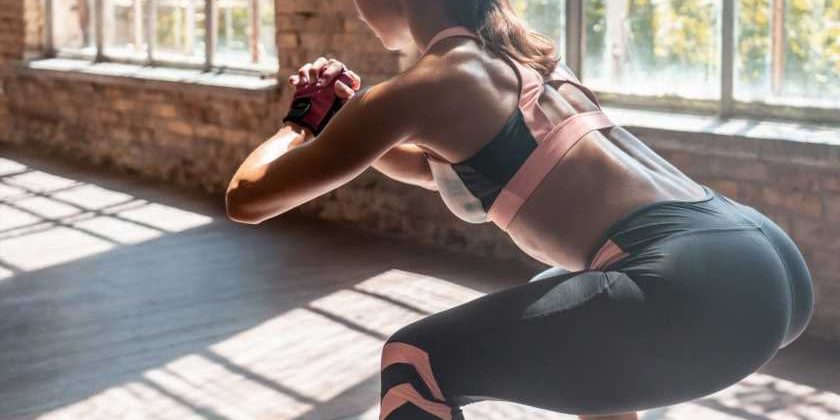Strength and conditioning workouts are beneficial for absolutely everyone, no matter what kind of exercise you do. Here, an expert explains why they’re so useful and how to get started.
You’ve probably mainly heard the term ‘conditioning’ in two places: at the hairdressers and at the gym. The meaning of the word when used in reference to making your hair silky and smooth is pretty obvious. But conditioning workouts refer to a whole host of different things and even avid gym-goers might find themselves unsure as to what they actually are.
So what is strength and conditioning? Simply put, it refers to workouts that target your entire body and use a range of different muscles. Unlike some workouts that aim only to improve your strength or your fitness or target one part of the body, conditioning workouts improve flexibility, strength and endurance for a full-body workout.
You may also like
Strength training: 7 functional training movements you need to include in your workouts
What are the benefits of conditioning workouts?
“Conditioning workouts boost cardiovascular health, slow down bone loss and improve bone density,” explains Deep Heat’s physiotherapist Sammy Margo. If you incorporate strength elements into your conditioning workouts, they can also increase muscle mass, helping you to lift heavier in the future and recover quicker.
Conditioning workouts are beneficial whatever type of exercise you do – whether you’re a keen runner, exclusively lift weights or prefer yoga and pilates. This is because they engage a whole host of your muscle groups and target many different areas of health and fitness.
Can anyone take part in conditioning workouts?
Strength and conditioning workouts are often equipment-free, meaning you can do them from home, outdoors or at the gym. However, don’t throw yourself into a conditioning workout if you’re new to exercise or have taken some time off working out.
“If you’re new to fitness or have any injuries or medical concerns, begin slowly,” Margo advises. “Modify the exercises to suit your body as necessary. Get used to new movements before moving on to more difficult moves.”
It’s always a good idea to check with your doctor or a physio before taking part in full-body workouts like these, especially if you have any medical conditions.
Strength and conditioning exercises to try
Squats
A squat is a great lower-body conditioning exercise as it targets the glutes, quads, hips and the hamstrings. Stand with your feet slightly wider than your hips. Slowly lower down to a squat position. Repeat over 20 seconds.
Split jacks
The split jack is a cardiovascular movement targeting the glutes, quads and hamstrings. Stand in a lunge position with your left foot forward. Extend your right arm overhead and left arm alongside your body. Repeat 2 to 4 times. Switch the position of your feet to bring your right foot forward. Extend your left arm overhead and right arm alongside your body. Continue for 30 seconds. Repeat two to four times.
Lateral lunges
The lateral lunge targets your abductors, glutes, adductors, and the hamstrings. Stand with your feet shoulder-width apart. Press firmly into your right foot as you take a big step to the side with your left foot. Slowly lower your hips down and bend your left leg, keeping your right leg straight. Raise back up to standing and step your left foot back to the starting position. Then do the opposite side.
Push ups
A great upper-body conditioning exercise, push ups target the arms and improve core stability. Start by placing your hands on the ground, just outside shoulder-width apart (like a high plank). Maintain tension throughout the body (don’t drop the hips) and slowly lower your body towards the ground, then push back up to the starting position. If this is too much of a challenge, start on your knees.
For more workout tips, advice and ideas, head to the Strong Women Training Club.
Images: Getty
Source: Read Full Article
